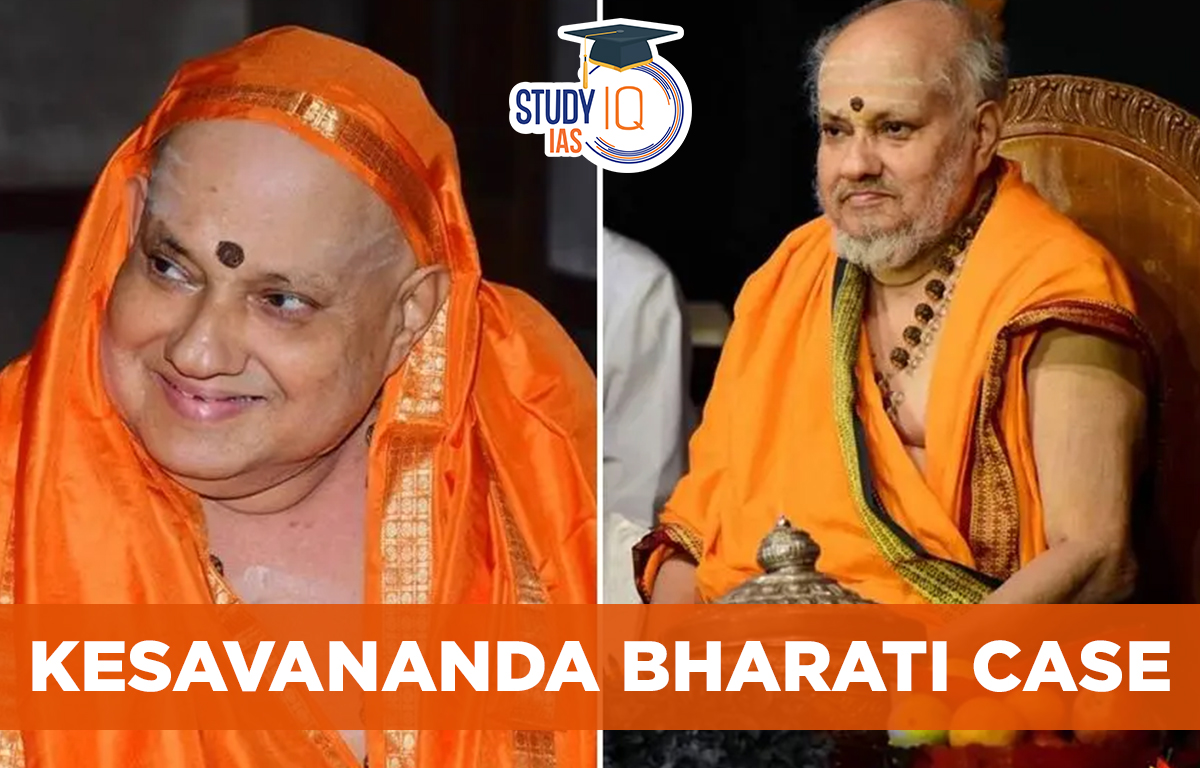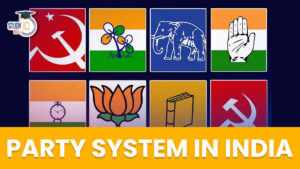Table of Contents
Kesavananda Bharati Case
The Kesavananda Bharati case (1973) is the most important ruling in Indian constitutional law, it introduced the Doctrine of Basic Structure. The Court ruled that while Parliament can amend the Constitution, this power is not absolute; certain fundamental features cannot be altered.
- Established the Doctrine of Basic Structure, protecting certain fundamental features of the Constitution from amendments.
- Decided by the largest Supreme Court bench ever, with 13 judges.
- Balanced the need for amendments with the protection of fundamental rights.
- Influenced many later cases and remains a cornerstone of Indian constitutional law.
Read About: Indra Sawhney Case
Kesavananda Bharati Case Background
Kesavananda Bharati, head of the Edneer Mutt, challenged the Kerala government’s Land Reforms Amendment Act of 1969, which aimed to acquire some of the Mutt’s land. He filed a petition in February 1970 under Article 32 of the Constitution, arguing that the reforms violated his fundamental rights to freedom of religion and property.
Earlier rulings (Shankari Prasad and Sajjan Singh) had given Parliament broad powers to amend the Constitution. However, after the Golaknath case, Parliament passed several amendments to assert its authority. The 24th Amendment (1971) confirmed Parliament’s power to amend any part of the Constitution, while the 25th Amendment (1972) removed the right to property as a fundamental right, and the 29th Amendment added the Kerala Land Reforms Act to the 9th Schedule.
Who was Kesavananda Bharati?
Kesavananda Bharati was a Hindu Monk and a patron of Kannada culture and art. He was also the petitioner in the Keshvananda Bharati vs State of Kerala case. February 1970 Swami Kesavananda Bharati, senior plaintiff and head of the Hindu monastery, Kerala, challenged the Kerala government’s attempts, under two land reform acts, to impose restrictions on the management of its property.
A petition under Article 26, concerning the right to manage religiously owned property without government interference, was filed. A 13-judge Bench was set up by the Supreme Court, to hear the case. To decide the question underlying the case was: Does the power of Parliament to amend the Constitution unlimited?
The doctrine of Basic Structure
Definition
The Doctrine of Basic Structure is a principle in Indian constitutional law that allows Parliament to amend the Constitution but prevents it from changing its fundamental structure. This doctrine was first recognized in the Keshavananda Bharti case, established by the Supreme Court to protect key aspects of the Constitution.
Application in the Case
In the Keshavananda Bharti case, the Supreme Court used this doctrine to determine the validity of amendments. The court ruled that any amendment harming the Constitution’s basic structure is invalid, preserving its core principles.
After-effects
The Doctrine of Basic Structure safeguards against changes that could weaken the Constitution’s fundamental values. It ensures the essence of the Constitution remains intact while allowing for its evolution. This doctrine is also recognized in countries like Bangladesh, Pakistan, and Uganda, showing its importance in constitutional law worldwide.
Judgements before Kesavananda Bharati Case:
| Name of the Case | Judgements of the Supreme Court |
| A.K. Gopalan v. State of Madras (1950) |
|
| Shankari Prasad and Sajjan Singh |
|
| Golaknath v. State of Punjab (1967) |
|
Read About: Mandal Commission
The Supreme Court’s Composition and Hearings
Composition of the Bench
The Keshavananda Bharti case was heard by the largest Supreme Court bench ever, made up of 13 judges. This historic assembly included some of the most respected judges, addressing issues with a lasting impact on the Constitution.
Duration and Key Hearings
The hearings lasted 68 days, making it one of the longest in Supreme Court history. This lengthy process highlighted the complexity of the case and the importance of the arguments presented.
Major Legal Arguments Presented
Key debates centered on whether Parliament could amend any part of the Constitution, including fundamental rights. The government argued for unlimited power under Article 368, while the opposition claimed there are limits to protect the Constitution’s basic structure. This debate was crucial to the final judgment.
Overall, the case reinforced the Supreme Court’s role in protecting the Constitution and ensuring fundamental rights, influencing Indian constitutional law to this day.
Kesavananda Bharati vs State of Kerala Case Verdict
The landmark judgement was delivered on 24 April 1973 by a thin majority of 7:6 wherein the majority held that any provision of the Indian Constitution can be amended by the Parliament in order to fulfil its socio-economic obligations which are guaranteed to the citizens as mentioned in the Preamble of Indian Constitution, provided that such amendment should not disturb the basic structure of the constitution.
Under its judgement SC held that the 24th Constitutional Amendment 1971 was is valid, but it also held that the second part of the 25th Constitutional Amendment 1971 was ultra vires.
The Supreme Court declared Article 31C as unconstitutional on the ground that judicial review is the basic structure and hence cannot be taken away from the judiciary. Despite the ruling that Parliament cannot breach fundamental rights, the amendment that removed the fundamental right to property was upheld by the court. The court ruled that in spirit, the amendment of the constitution would not violate the “basic structure”.
Implications of Kesavananda Bharati Case Judgement
Politically, as a result of the verdict, the judiciary faced its biggest litmus test against the executive. They ignored the opinion government superseded three judges. Within less than two years of the restoration of Parliament’s amending powers to near absolute terms, the 42nd amendment 1946 was challenged before the Supreme Court by Minerva Mills owners (Bangalore) a sick industrial firm which was nationalised by the government in 1974. Minerva Mills reaffirmed the Basic structure doctrine which was later done in the Waman Rao case, in 1981.


 List of Governor of States in India, Con...
List of Governor of States in India, Con...
 Maharashtra Bill to Curb Urban Naxalism,...
Maharashtra Bill to Curb Urban Naxalism,...
 Party System in India, Feature, Importan...
Party System in India, Feature, Importan...





















